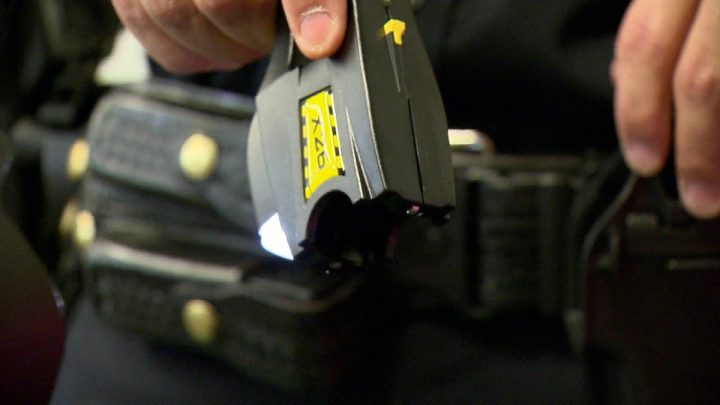REGINA – Regina police have a new tool on their belt – Tasers.

“It was actually more dangerous for police officers and the public because you would have to get closer to someone to stop them for what they’re doing,” said Inspector Darcy Koch of the Regina Police Service, with regards to the five-year suspension on the use of conducted energy weapons (CEWs).
Three reported incidents in the past three weeks puts Regina on track to surpassing the 11 times Tasers were used back in 2006. But the Regina Police Service says they are taking extra steps to ensure those numbers don’t climb too high.
“We’re going even further to say that we’re going to report and have oversight on even pointing that weapon in Regina. That’s our internal policy,” said Koch.
That’s policy enforced, even though the provincial police commission categorizes conducted energy weapons as non-lethal.
“A firearm is designed to kill. A CEW isn’t designed with that intention in mind,” said Richard Peach of the Saskatchewan Police Commission.
Many will recall the shocking video captured inside a Vancouver airport of Robert Dziekanski being tasered by multiple RCMP officers – it’s what called the Saskatchewan Police Commission to put a moratorium on municipal use.
“They’re not safe, in my view, under those circumstances. But where you have an ideal situation — a person who is a large male, strong, healthy, tasered in the back — then they’re perfectly okay,” said Robert Gordon, criminology professor at Simon Fraser University.
That “ideal situation” rarely exists, but the Regina Police Service is spending nearly $190,000 on training officers and buying new CEWs this year. They’re also changing their methods – unlike before the suspension, officers will no longer have to experience being tasered in order to deploy one.
“It’s not only is it not required — that old practice is prohibited,” said Peach. “It sent the wrong message. The commission was concerned if we’re tasering students we’re training, that somehow appeared to minimize the risk.”
- Posters promoting ‘Steal From Loblaws Day’ are circulating. How did we get here?
- Canadian food banks are on the brink: ‘This is not a sustainable situation’
- Video shows Ontario police sharing Trudeau’s location with protester, investigation launched
- Solar eclipse eye damage: More than 160 cases reported in Ontario, Quebec




Comments